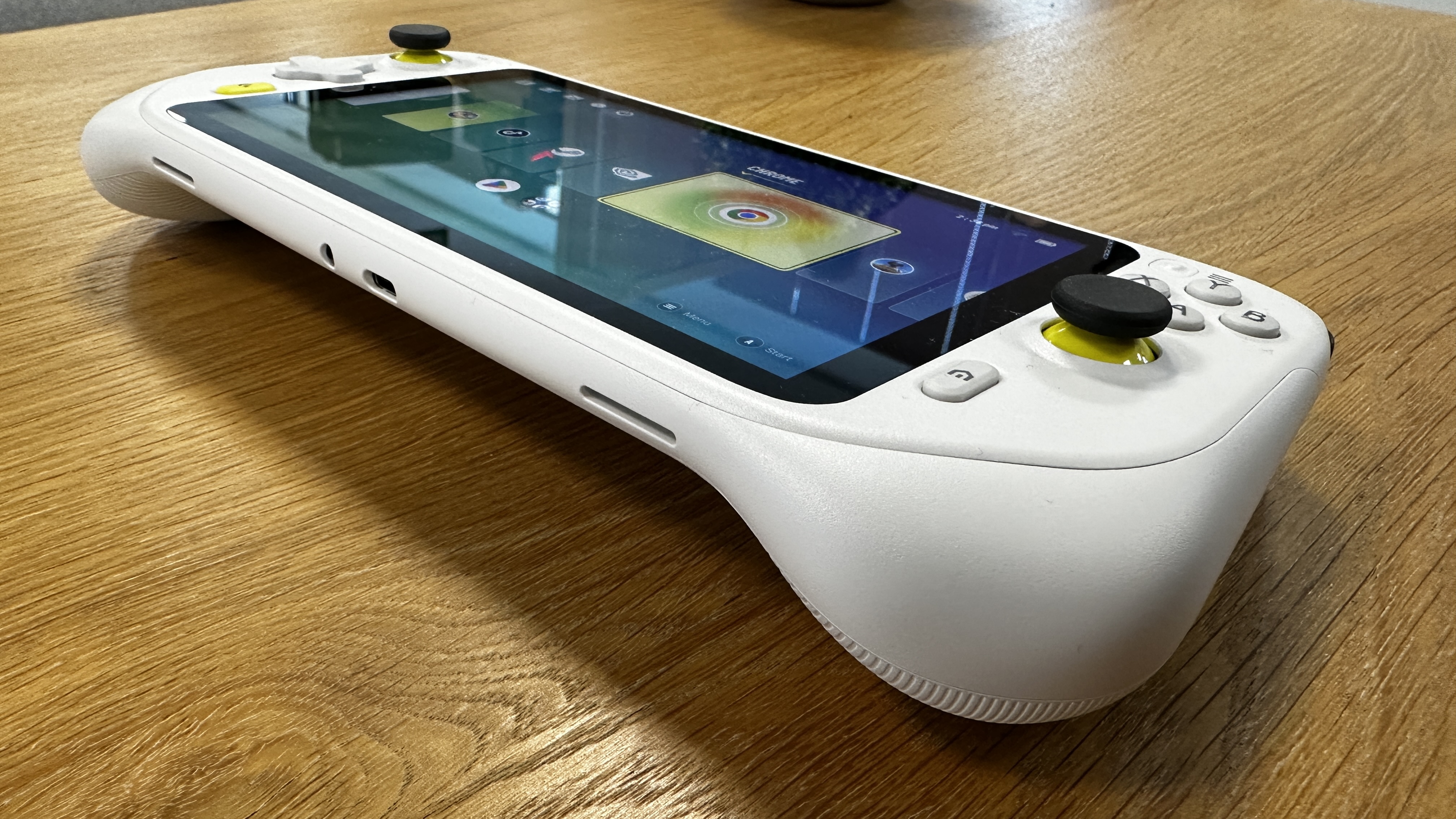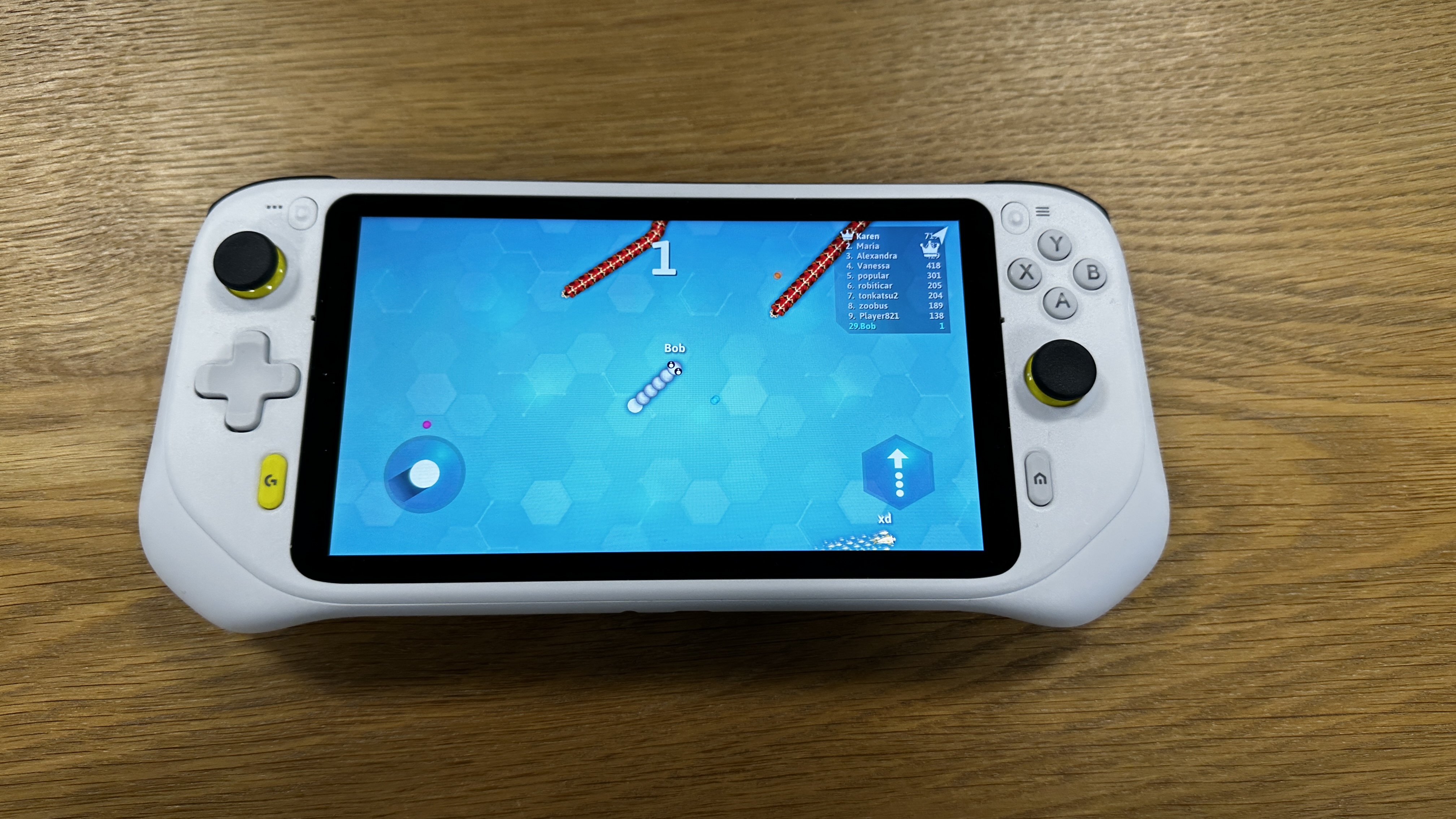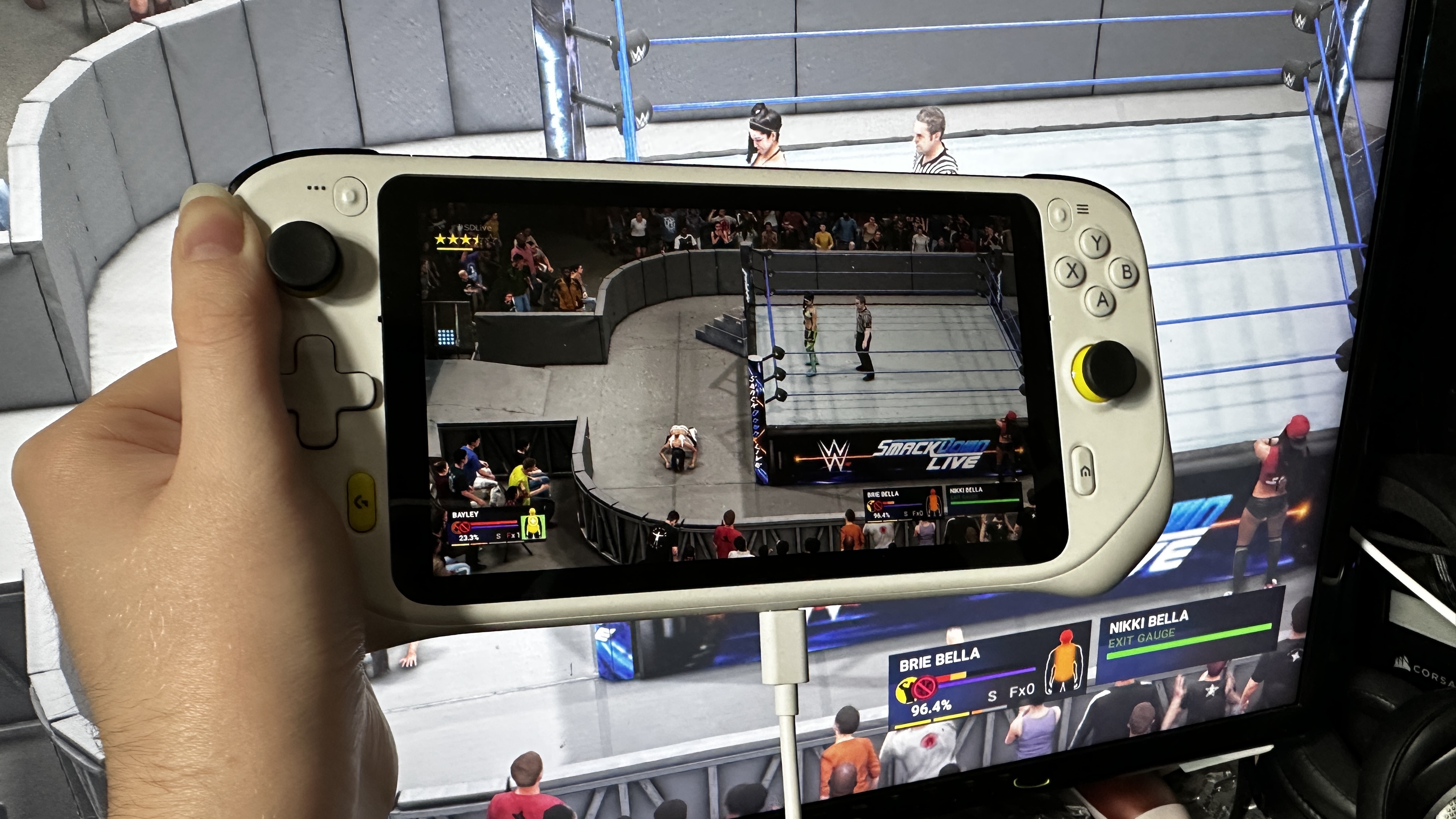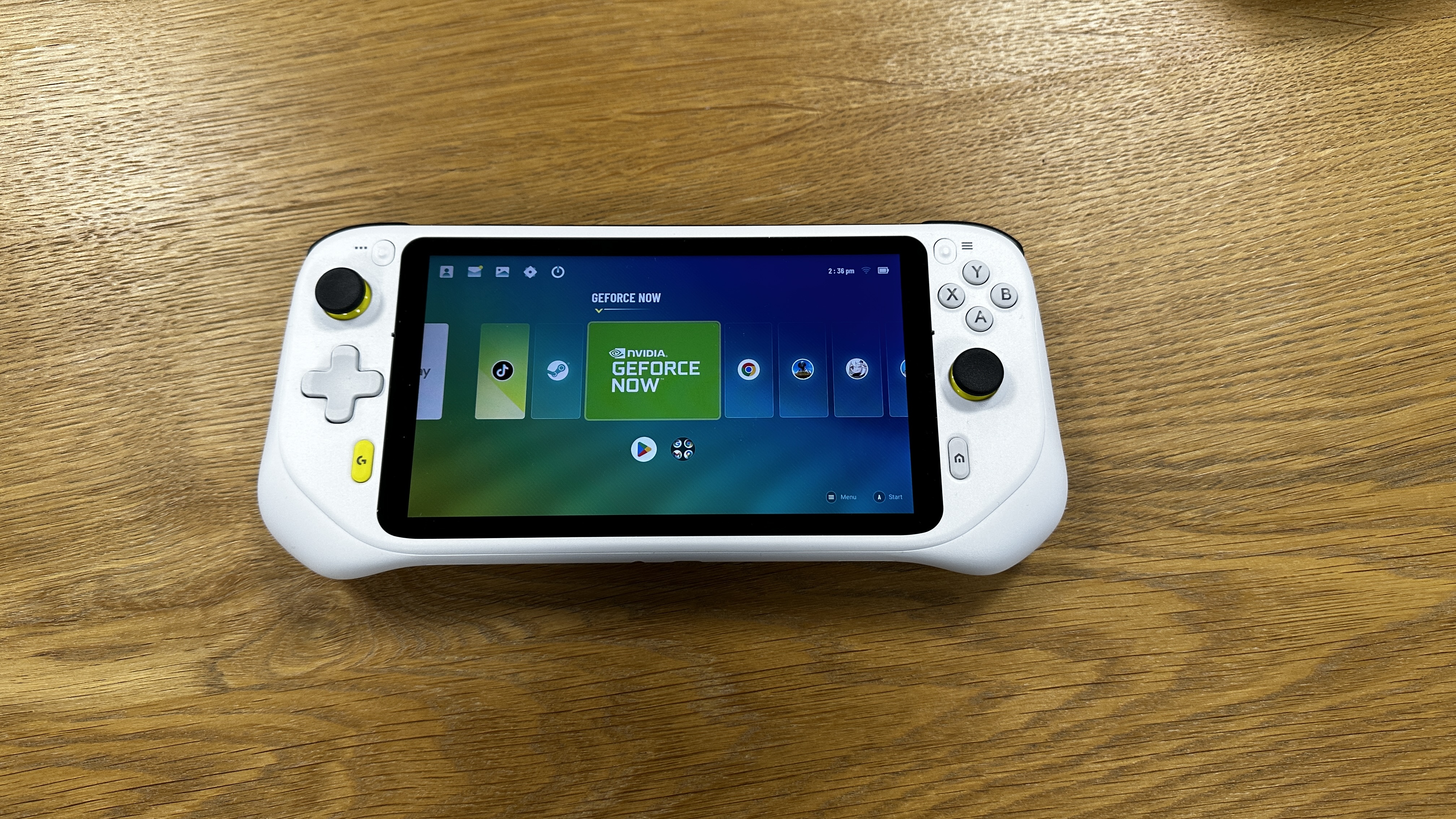TechRadar Verdict
The Logitech G Cloud has some redeeming qualities with its great screen, battery life, and form factor. However, the price point and reliance on inconsistent streaming software make it challenging to recommend compared to the competition in the handheld gaming market this year.
Pros
- +
Great screen
- +
Console quality controls
- +
Ergonomic form factor
Cons
- -
It’s too expensive
- -
Middling Android performance
- -
Streaming is inconsistent
Why you can trust TechRadar
The Logitech G Cloud is the line of handheld games consoles following in the success of the Nintendo Switch and Valve's Steam Deck. Unlike those devices, though, this one's focus isn't to run games natively, but to stream them from the cloud as its name would imply. Armed with respectable hardware for this purpose and an ergonomic form factor, there's a lot going for it on paper.
The reality of the matter is much different though, as its limited usability (thanks in part to a complete lack of 4G/5G support) and high price tag means it cannot be considered one of the best handheld games consoles when compared to the competition. It's built for a very particular niche that I don't think exists; an audience that wants less functionality than what the best tablets can offer to stream content from the best games consoles on the market.
Price and Availability
The Logitech G Cloud initially launched in the US in October 2022 and is now available in the UK and Europe for $349.99 / £329.99. Australian pricing and availability have not been confirmed. However, it should be launching in the next few weeks, given the further availability of the handheld as of May 2023. It’s a steep rate wherever you’re based on the globe, costing the same amount (if not more) than the Nintendo Switch OLED and is comparable to the base 64GB Steam Deck model, which retails at $399.99 / £349.99.
Design and Features

The Logitech G Cloud utilizes a 1080p 7-inch IPS 60 Hz multi-touch screen as its panel of touch and is bolstered by console quality controls and an ergonomic grip on either side. The stick and face button layout should be familiar to those who use the best Xbox controllers with its XYAB format and asymmetrical placement. The D-pad here is solid but isn’t quite as good as what you’ll find on the Xbox Wireless Controller; it’s satisfying enough but doesn’t have the same tactile click with its quiet feedback. As well as the more standard approach, there are buttons acting as start and options, as well as dedicated home and hub ones.
The most striking thing about the Logitech G Cloud is how thin and light it is, even compared to other gaming handhelds from Valve, Nintendo, and AyaNeo. Weighing in at just 463g and measuring at just 1.3 inches in thickness, it’s a slight machine, to say the least. Unfortunately, the main reason Logitech’s latest device comes in lighter and slimmer than its rivals is due to the guts inside. That’s because the Logitech G Cloud is essentially an Android tablet running the Qualcomm Snapdragon 720G octa-core processor instead of something more hardware intensive, such as the Nvidia Tegra X1 or an AMD Ryzen APU.
The hardware manufacturer claims you can expect around 12 hours of playback from the Logitech G Cloud’s 6000 mAh battery. From my testing, I can confirm that that’s about right when used purely for cloud streaming through in-built applications like Nvidia GeForce Now, Xbox Cloud Gaming, and Steam Link. However, your mileage may seriously vary when gaming natively on Android in titles that will flex the hardware a little further. If you’re looking at having this as a machine to do both, then you’re looking at a more inconsistent 8-10 hours when all is said and done, but that’s still reasonably good for a handheld, all told.
The Logitech G Cloud features two modes in the software for handheld and tablet use; the former is a streamlined approach with a console-style menu similar to Steam’s Big Picture, and the latter is a basic vanilla Android experience. For the bulk of my testing, I kept the machine in its Logitech G Hub menu just to make navigation straightforward, as it was the fastest way to jump between the various game streaming applications, the Google Play store, and the mobile titles I had installed and ready to go.
Performance

The performance of the Logitech G Cloud is wildly inconsistent depending on the streaming service you choose to run for it. Many of my hours were spent with the Xbox Cloud Gaming (Beta) through Xbox Game Pass Ultimate, provided by the PR for review purposes. While I can respect the convenience of being able to boot up any number of titles available to Xbox Series X users on the platform and play some of the best Xbox Series X games without the need for the system itself, the experience is incredibly mixed.
There’s close to what feels like a half-second of delay, regardless of which game I was playing through the Xbox Cloud Gaming’s servers. To make matters worse, the video quality itself was lackluster. It was frequently fuzzy in motion, making faster-paced titles, such as Forza Horizon 5 and Doom Eternal, close to unplayable as the roads merged together and the demons were a blur. Less intense games such as Powerwash Simulator and Skate 3 didn’t have this problem, but I found text hard to read, and the slight lag between pressing buttons and things reacting was frustrating more often than not. Yes, the service is in Beta (and also available for Android and iOS outside of the Logitech G Cloud), but seeing as this handheld pushes Xbox so heavily, it’s far from ideal that the performance is this lacking.
For the record, I have a decent wireless internet connection. Through an internet speed test conducted from the Logitech G Cloud, I got 495.4 MB/s download and 35.7 MB/s upload which greatly exceeds the minimum recommend rates cited by Microsoft itself. It wasn’t the best first impression of the handheld, but things quickly improved when switching over to Nvidia GeForce Now’s Ultimate package. Similar to the ill-fated Google Stadia, this service utilizes high-end gaming PCs to stream gameplay on far weaker devices. My subscription granted me access to rigs running the Nvidia RTX 4080, which meant I was getting far better-looking games overall.
The streaming quality of Nvidia GeForce Now is genuinely excellent. There are only around nine frames of input delay, which is similar to what you’ll find when playing low ping multiplayer titles (near seamless), and the image quality was considerably sharper than through Xbox Game Pass. The trade-off is that you don’t have a vast game library to choose from. Instead, you can boot and stream games you already own through Steam, GOG, Epic, and Ubisoft Connect as licenses. It’s a cool idea for sure, and it made playing through Cyberpunk 2077 and Rayman Legends a breeze as if they were running on native hardware. It’s not all good news, though. That’s because this service tier will run you $19.99 / £14.99 a month to play games you already own, requiring you to have an extensive PC gaming library to make the most of this.

Lastly, I tried out Steam Link, which works similarly to Nvidia GeForce Now but uses local hardware. Streaming from my gaming PC to the Logitech G Cloud was the best of the three services I tried and wouldn’t cost me anything. Playing through the likes of WWE 2K23, Hotline Miami, and Mortal Kombat 11 was nice, as I could kick back on the sofa or lounge on the bed and have the same overall experience. The fact that this works so well as it is free to any Steam users further made the idea of paying an additional fee through Nvidia’s offerings even more baffling.
Comparing the Logitech G Cloud to some of the best Android tablets is where the cracks really begin to show. While the Qualcomm Snapdragon 720G isn’t the weakest mobile processor on the market, it’s far from a flagship, as running games from the Google Play store didn’t exactly paint this handheld in the best light. I was stunned to see occasional stuttering in the likes of Snake.io and even Subway Surfers, but things were shakier when playing through PUBG Mobile, Genshin Impact, and Call of Duty Mobile with the settings scaled down. To make matters worse, there was little I could do to make the latter two games recognize the built-in controller, meaning I was stuck awkwardly using the touchscreen, which was far from ideal.
The reliance on an internet connection to play games instead of being able to natively render them as the Steam Deck and Nintendo Switch can for a similar price makes this handheld nearly impossible to recommend. It’s not a great Android tablet on its own, and the streaming services available feature too many caveats to consider prioritizing when Steam Link does it better. There’s also the fact that all these apps are available on Android phones and iOS, with the price of something like the BackBone One ($99.99 / £99.99 / AU$179.99) or Razer Kishi ($79.99 / £79.99 / AU$115) giving you the same fundamental experience with a device you already own.

Formerly TechRadar Gaming's Hardware Editor, Aleksha McLoughlin is now a freelance writer and editor specializing in computing tech, video games, and E-commerce. As well as her many contributions to this site, you'll also find her work available on sister sites such as PC Gamer, GamesRadar, and Android Central. Additionally, more of her bylines can be found on Trusted Reviews, Dexerto, Expert Reviews, Techopedia, PC Guide, VideoGamer, and more.
